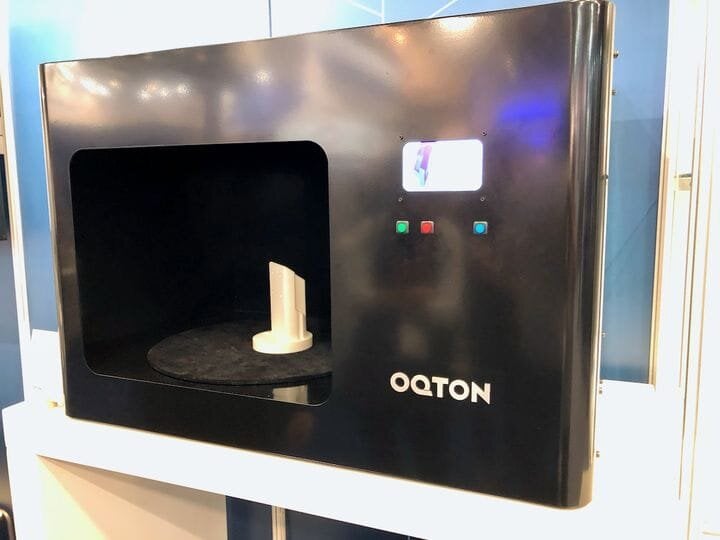![Prototype automated quality control device for completed 3D prints from Oqton [Source: Fabbaloo]](https://fabbaloo.com/wp-content/uploads/2020/05/image-asset_img_5eb08c610bdb2.jpg)
I’m seeing some trends emerge regarding the importance of quality assurance methods in additive manufacturing.
The essence of manufacturing is to serially produce items that are always within specified tolerances for various engineering and geometric dimensions. Parts are no good if they aren’t within spec, and even more importantly, profits will be higher if higher yields are achieved.
This is particularly important for metal additive manufacturing, where the cost of production is relatively high due to the cost of the equipment, post-processing and the material itself. You don’t want to waste that US$500/kg titanium powder, do you?
Thus modern manufacturing operations inevitably have some type of integrated quality control mechanisms that ensure only “good” parts are produced and released.
3D Printers Designed For Prototyping
This is a bit of a change for the 3D printing industry. Earlier in their history, 3D printers were first used for prototyping for a number of good and not-so-good reasons.
The prime reason was the available materials at the time were good for the purpose of 3D printing, but not necessarily useful for end-use parts. They might not have the necessary thermal resistance, for example. In the end much of the early prototyping centered around testing the geometry and shape of the object, rather than its intended function.
The 3D printers thus began without the need for integrated quality control mechanisms. If a prototype were able to be printed, mission accomplished. Just get the print done!
That has largely been the approach to the design of 3D printers to this day, but things have been changing.
Production Use Of Additive Manufacturing Increasing
In recent years the two most important change in the industry has been the introduction of powerful materials and subsequent “discovery” of them by manufacturers.
New 3D printing equipment is capable of producing objects in materials actually suitable for end-use applications, such as the many different metal alloys now 3D printable, as well as the new high temperature materials such as PEEK and ULTEM.
With the discovery of these material capabilities, some industries are now producing end-use parts. But by doing so they must then perform the required manufacturing quality control checks. And the 3D printers being used generally have not included that capability, having inherited much of their design from the previous world of prototyping.
This is starting to change.
Types of Additive Manufacturing QA Solutions
We’re starting to see specific solutions for additive manufacturing quality emerge from various quarters. There seems to be two (or three) approaches being used.
One approach is being used by 3D printer manufacturers who have been slowly incorporating QA features directly into their equipment. For powder bed laser metal 3D printing systems, one such feature is realtime meltpool monitoring, an example being the system used in SLM Solutions equipment.
Another approach is external, with an example being Additive Assurance, where they apply external sensors to an existing 3D printing configuration to gather information and provide analysis.
If there is a third type of QA solution, it might be the type implemented by OQTON, who slurp up all available data from machines and external sensors and process them using advanced machine learning algorithms to assess print quality. They’ve even developed a simple-to-use “QA Box” (shown at top) for production use.
Future AM Quality Assurance
Most of this QA activity seems to be present on metal 3D printing operations, which is sensible given the interest by several industries to make production parts. However, I suspect that has the popularity of high temperature thermoplastics for production similarly increases, we will begin to see more integrated and external QA systems focused on thermoplastic parts.
I’m imagining now that future 3D printers of all sorts could by default include basic QA features to ensure that what came out matched expectations.

